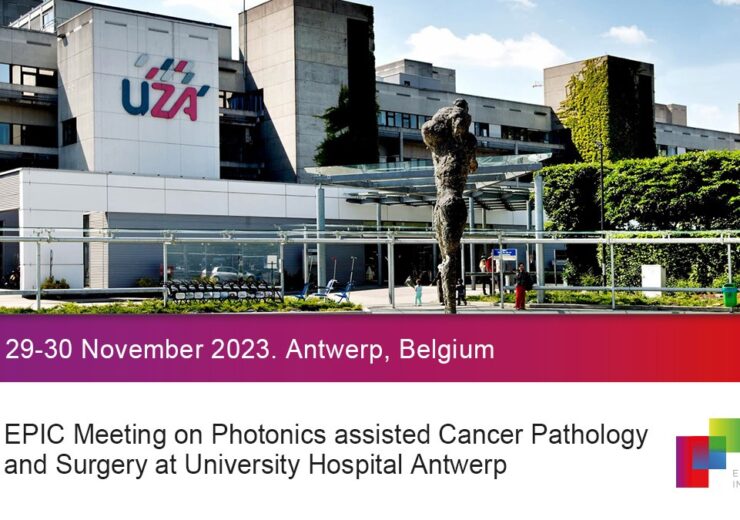Photonics technologies have emerged as a transformative force in cancer research and treatment, offering innovative solutions that promise to revolutionize diagnostics, surgical procedures, and therapeutic modalities. The unique properties of laser light have enabled its use for early cancer detection, precision surgery, and advanced imaging, while photonics sensors, spectroscopy, and analytical techniques have played pivotal roles in enhancing our ability to combat this devastating disease.

Image: EPIC
Photonics technologies have emerged as a transformative force in cancer research and treatment, offering innovative solutions that promise to revolutionize diagnostics, surgical procedures, and therapeutic modalities. The unique properties of laser light have enabled its use for early cancer detection, precision surgery, and advanced imaging, while photonics sensors, spectroscopy, and analytical techniques have played pivotal roles in enhancing our ability to combat this devastating disease.
The remarkable progress in photonics technology has paved the way for the development of powerful imaging systems that enable clinicians to visualize detailed structures within living tissues, thus improving both diagnostic accuracy and therapeutic interventions. Moreover, photonics-enabled technologies such as Raman spectroscopy, surgical lasers, optical coherence tomography (OCT), endoscopy, hyperspectral imaging, photoacoustic tomography, and fluorescence imaging have the potential to introduce new solutions and equipment to hospitals and clinics worldwide.
A panel of experts will delve into these critical photonics technologies for health applications during the upcoming EPIC meeting on Photonics assisted Cancer Pathology and Surgery at University Hospital Antwerp next 29-30 November 2023.
SESSION 1: Diagnostics Using Imaging Techniques
Broadband Stimulated Raman Histology for Objective, AI Assisted Tumor Diagnosis. By Matteo Negro, CEO & CTO at Cambridge Raman Imaging
Matteo Negro will shed light on how Coherent Raman Imaging, particularly stimulated Raman histology (SRH), is revolutionizing cancer diagnostics by providing sub-cellular resolution and molecule-specific contrast. He will introduce a broadband approach to SRH that opens the door to chemometric analysis of tissues with artificial intelligence, enabling virtual H&E staining and tissue segmentation for tumor diagnostic purposes.
Clinical-Compatible Stimulated Raman Imaging Device for Intraoperative Histology of Fresh Tissue Samples. By Tim Hellwig, CEO & Co-Founder of Refined Lasers
Tim Hellwig will unveil Refined Laser Systems’ innovative intraoperative microscope prototype that identifies tumor margins in real-time and offers rapid diagnosis with the assistance of remote pathologists and AI. This technology has the potential to significantly reduce the time and stress associated with cancer surgeries.
Hyperspectral Imaging in Cancer Detection and Diagnosis. By Fabrizio Preda, CEO of NIREOS
Fabrizio Preda will discuss the emerging modality of hyperspectral imaging and its applications in cancer detection and diagnosis. NIREOS has introduced a novel optical system for hyperspectral imaging based on Fourier-transform spectroscopy, promising high spectral accuracy and light throughput. This technology has the potential to revolutionize medical imaging precision.
SESSION 2: Photonics Technologies for Diagnostics
Development of a Fiber Optic Technology Platform for Raman Spectroscopic Tissue Analysis. By Gerwin Puppels, Managing Director of RiverD
Gerwin Puppels will provide insights into RiverD’s efforts to develop a fiber optic technology platform for tissue analysis based on Raman spectroscopy. This technology holds promise in various applications, including Raman-guided surgery and biopsy, and could potentially revolutionize clinical procedures.
A Photonics Platform for Multiplexed Liquid Biopsy-based Cancer Screening, Detection, and Monitoring. By Luc Scheres, CTO at Surfix
Luc Scheres will discuss Surfix Diagnostics’ innovative photonic diagnostics platform, which leverages photonic integrated chip (PIC) technology for highly scalable and multiplexed liquid biopsy-based cancer screening. This approach has the potential to offer a non-invasive and cost-effective alternative to traditional cancer diagnostics methods.
Light Activated Drug Delivery in Oncology. By Petteri Uusimaa, Founder & CTO of Modulight
Petteri Uusimaa will explore the applications of light-activated drug delivery, such as photoimmunotherapy (PIT), in the field of oncology. This technology offers potent localized tumor control, reduced side effects, and long-term immunotherapeutic anti-cancer effects, providing new avenues for cancer care.
SESSION 4: Fastlane to the Clinic: Regulatory Aspects and Documentation and Certification Requirements
Clinical Evaluation: What Does it Take to Bring Your Meaningful Innovation to the Market? By Claus Schaffrath, Managing Director at MD squared
Claus Schaffrath will delve into the regulatory challenges and requirements in bringing photonics innovations to the medical device market. He will provide valuable insights into the clinical evaluation process, highlighting the importance of demonstrating safety and performance in medical applications.
This meeting promises to be a pivotal moment in the convergence of photonics technology and cancer research and treatment. By facilitating collaboration, sparking innovation, and addressing regulatory considerations, it will contribute to the development of cutting-edge solutions that have the potential to transform cancer care.
For more information and to register for the meeting, please click here.
Source: Company Press Release
